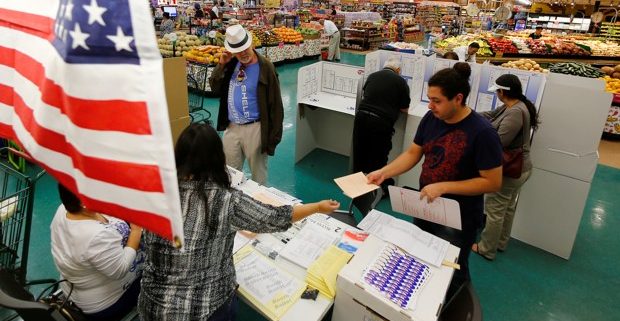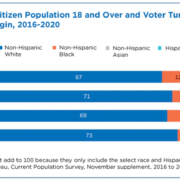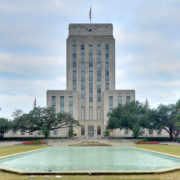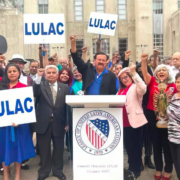The Impact of Young Voters on Midterm Elections 2022
There were several reasons to believe that a Red Wave was going to sweep the midterm elections: Biden’s extremely low approval rating, overwhelming concerns over the economy and the previous balance of the legislature. President Biden expressed his concerns over these conditions at a presidential brief on November 2 where he stated that “democracy itself” was at risk this midterm election.[1]
The President and Democrats were relieved when the anticipated red wave was disseminated on Election Night. The expected margin of victory for Republicans quickly evaporated as Democrats performed particularly well in places like Michigan, Pennsylvania, and Wisconsin, which were each swing states in 2020.[2] Considering that these are blue collar states, making up nearly 20 percent of the workforce in Michigan and in Wisconsin,[3] Republicans thought that the current state of the economy was enough to win this group over.
But, once again, a silent majority prevailed and this time it was amongst Zoomers and Millennials. Accordingly, 27% of US young adults between the ages of 18 and 29 cast their ballot in the 2022 midterm election, making up 12% of the voter electorate.[4] This year’s midterm elections saw the second highest rate of participation by youth after the 2018 midterm race, which accounted for 31% of young people’s votes.
Even though a 12% voting bloc doesn’t seem to hold much leverage at the federal level, the state level comprises of different populations with some of the most politically active cities, such as Ann Arbor (MI), Madison (WI), and Centre County (PA), being heavily influenced by college-aged political activists. One could expect college students to be the first in line to cast their vote as campuses cultivate an environment of equality and inclusion contingent on the election of Democratic candidates.
However, not all young adults share the same view. In fact, two-thirds of Millennials have never attended college.[5] And the 12% of young people who voted this midterm election reflected the college demographic. Their key issues were abortion, student debt, and the environment, whereas the general population were more concerned with inflation and crime.[6] It should be to no one’s surprise that young voters preferred Democratic candidates by a 28 point margin this election.[7]
As a Zoomer myself, I was shocked that the progressive views of college campuses still resonated with my peers. I thought that inflation was going to be the dominant concerns as Zoomers experienced their first recession in adulthood. We felt the pain of price increases on housing, gas, groceries, travel, etc. Perhaps it was the campus bubbles that shielded students from the economic realities that much of the world is facing.
This demographic of college aged students is unique, and Democrats shouldn’t assume that they will remain this loyal for years to come. Over the recent decades, college age students have always leaned Democrat, but as they age, a large amount of them will become more enticed by conservative views. Exit polls reported that voters aged 45-64 preferred Republican candidates 54% to 44% and voters aged 65+ preferred Republicans 55% to 43%. This isn’t to say that all people will grow to vote Republican, but to suggest that ideas aren’t fixed, and perspectives change when new experiences are undergone.
A place to register for voting is not hard to find on college campuses. I recall being asked almost daily whether I was a registered voter from the Ann Arbor Precinct staff. The staff definitely let their presence be known as they walked around campus with their clip-board in hand registering students. This same energy should be given to Millennials and Zoomers who aren’t in college or don’t have the college experience. Identifying and engaging with this group will be a new challenge for future candidates but the outcomes could be promising.
[1] https://www.whitehouse.gov/briefing-room/speeches-remarks/2022/11/03/remarks-by-president-biden-on-standing-up-for-democracy/
[2] https://ballotpedia.org/Presidential_battleground_states,_2020
[3] https://bluecollarjobs.us/2017/04/10/highest-to-lowest-share-of-blue-collar-jobs-by-state/
[4] https://circle.tufts.edu/latest-research/millions-youth-cast-ballots-decide-key-2022-races
[5] https://www.brookings.edu/blog/the-avenue/2018/02/06/where-do-the-most-educated-millennials-live/#:~:text=Millennials%20are%20the%20most%20credentialed,millennial%20women%20have%20college%20degrees.
[6] https://www.forbes.com/sites/michaeltnietzel/2022/11/10/youth-vote-helps-dilute-red-wave-into-pink-tint/?sh=229bd3cd2cce
[7] https://www.npr.org/2022/11/10/1135810302/turnout-among-young-voters-was-the-second-highest-for-a-midterm-in-past-30-years









